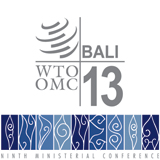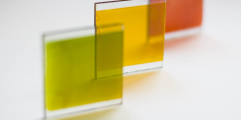The Sensors & Instrumentation Group builds on over 10 years of support for UK sensing innovation from the Sensors & Instrumentation KTN through to the Sensors & Instrumentation Knowledge Centre.
Monthly Archives: June 2012
KTN’s Sensors and Instrumentation Group
Comments Off on KTN’s Sensors and Instrumentation Group
Filed under Uncategorized
Royal Microscopical Society’s Journal
Journal of Microscopy July 2012
Edited By: Tony Wilson
Impact Factor: 1.872
ISI Journal Citation Reports © Ranking: 2010: 4/9 (Microscopy)
Online ISSN: 1365-2818
Comments Off on Royal Microscopical Society’s Journal
Filed under Business, Microscopy
Microscopy: The Global Market
- The global market for microscopes and accessories was worth about $3.1 billion in 2010. Sales are projected to exceed $3.2 billion in 2011 and $4.1 billion in 2016, a compound annual growth rate (CAGR) of 5% for 2011 to 2016.
- The market for microscopes is estimated to reach nearly $2.7 billion in 2011 and is expected to increase at a 4.9% compound annual growth rate to reach nearly $3.4 billion in 2016.
- The market for accessories and supplies is valued at nearly $488 million in 2011. This should reach nearly $632 million in 2016, for a CAGR of 5.3%.
http://bccresearch.com/report/microscopes-global-market-ias017d.html
Comments Off on Microscopy: The Global Market
Filed under Business, Microscopy
Nano-sandwich technique improves efficiency of solar cells
The active layer (blue line) is sandwiched between layers of dielectric material.
Researchers from North Carolina State University have found a way to create much slimmer thin-film solar cells without sacrificing the cells’ ability to absorb solar energy. Making the cells thinner should significantly decrease manufacturing costs for the technology (see paper in Nano Letters: “Dielectric Core–Shell Optical Antennas for Strong Solar Absorption Enhancement”).
“We were able to create solar cells using a ‘nanoscale sandwich’ design with an ultra-thin ‘active’ layer,” says Dr. Linyou Cao, an assistant professor of materials science and engineering at NC State and co-author of a paper describing the research. “For example, we created a solar cell with an active layer of amorphous silicon that is only 70 nanometers (nm) thick. This is a significant improvement, because typical thin-film solar cells currently on the market that also use amorphous silicon have active layers between 300 and 500 nm thick.” The “active” layer in thin-film solar cells is the layer of material that actually absorbs solar energy for conversion into electricity or chemical fuel.
Comments Off on Nano-sandwich technique improves efficiency of solar cells
Filed under Business, Nanotechnology
3Dimensions positioning from a single transmitter
 Technology originally developed to track badgers underground could soon be used to locate people in an emergency situation such as a bomb attack or earthquake.
Technology originally developed to track badgers underground could soon be used to locate people in an emergency situation such as a bomb attack or earthquake.
GPS is good at pinpointing locations in open spaces but below the surface it’s a different story. The limitations of conventional tracking technology were exposed in the 2005 London bombings, and numerous earthquakes since, where the emergency services struggled to locate people in underground areas or buried beneath debris.
Positioning indoors is also a challenge, with no clear winning technology that is able to address people’s day-to-day needs, such as finding their way around an airport.
In 2009 Andrew Markham and Niki Trigoni, from Oxford University’s Department of Computer Science, faced similar problems when they joined a project to study badgers in Oxford’s Wytham Woods. The animals spend much of their lives underground where conventional technology couldn’t keep tabs on them.
The solution developed by Andrew and Niki is a technology based on generating very low frequency fields. This has the unique advantage of penetrating obstacles, enabling positioning and communication even through thick layers of rock, soil and concrete.
‘Most technologies are only checking the magnitude of the signal – the signal strength from each transmitter – to work out distance,’ Andrew told Mark Piesing of Wired.co.uk. In contrast the new technology measures ‘vectors, which give you the magnitude and direction… Our technology can work out your position in three dimensions from a single transmitter.’ This contrasts with other approaches such as GPS or WiFi which are based on triangulation and typically require signals from at least four transmitters.
http://www.wired.co.uk/news/archive/2012-06/06/low-frequency-location-tracking
Comments Off on 3Dimensions positioning from a single transmitter
Filed under Microscopy
Plasmonics used for early detection of lung cancer
The BiopSys team has already developed the technique to the point where it produces “a higher-fidelity, more sensitive measurement than in any existing commercial technology,” Walker says. “That’s a good first step. But that’s in a lab setting.” He hopes that companies will soon seek to license the technology, for which his team has made several patent applications. “The hope and expectation is that, as this technology develops, it gets translated onto end users – companies that will manufacture the devices, and doctors that will use them.” That could take another five to 10 years, he says.
Source: Prof Gilbert Walker Laboratory at the University of Toronto
Comments Off on Plasmonics used for early detection of lung cancer
Filed under Microscopy, Nanotechnology
D5 No Harm to Environment
………a three-year debate over the need to regulate decamethylcyclopentasiloxane, also known as D5, ended when federal Environment Minister Peter Kent concluded that it does not harm the environment.
D5 and related siloxanes are noted for their ability to provide a quick-drying, non-oily feel to everything from shampoo to sunscreen. In January 2009, a screening assessment, conducted as part of Canada’s ongoing Chemicals Management Plan, flagged D5 as potentially harmful to the environment. However, in July 2009 the Silicones Environmental, Health and Safety Council of North America submitted a Notice of Objection. In response to this, then-environment minister Jim Prentice established a scientific board of review to look into the matter. The board issued its report last fall.
The Report of the Board of Review for Decamethylcyclopentasiloxane (Siloxane D5) concluded that, due to its high vapour pressure, D5 tends to partition primarily into air, where it is quickly degraded into harmless compounds by indirect photolysis. Although it can persist in sediments and accumulate in sediment-dwelling organisms, it does not biomagnify through the food chain. The report noted that “siloxane D5 will not accumulate to sufficiently great concentrations to cause adverse effects in organisms in air, water, soils, or sediments.”
Source: The Canadian Chemical News (Canadian Society for Chemistry))
Comments Off on D5 No Harm to Environment
Filed under Nanotechnology


























































-original.png)








































